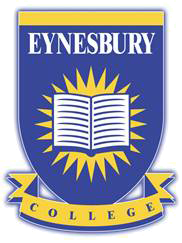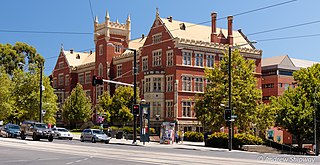
Tertiary education fees in Australia are payable for courses at tertiary education institutions. The Commonwealth government provides loans and subsidies to relieve the cost of tertiary education for some students. Some students are supported by the government and are required to pay only part of the cost of tuition, called the "student contribution", and the government pays the balance. Some government supported students can defer payment of their contribution as a HECS-HELP loan. Other domestic students are full fee-paying and do not receive direct government contribution to the cost of their education. Some domestic students in full fee courses can obtain a FEE-HELP loan from the Australian government up to a lifetime limit of $150,000 for medicine, dentistry and veterinary science programs and $104,440 for all other programs.

Podiatry, or podiatric medicine, also known as chiropody, is a branch of medicine devoted to the study, diagnosis, and treatment of disorders of the foot, and ankle. The healthcare professional is known as a podiatrist. The US podiatric medical school curriculum includes lower extremity anatomy, general human anatomy, physiology, general medicine, physical assessment, biochemistry, neurobiology, pathophysiology, genetics and embryology, microbiology, histology, pharmacology, women's health, physical rehabilitation, sports medicine, research, ethics and jurisprudence, biomechanics, general principles of orthopedic surgery, and foot and ankle surgery.
An examination board is an organization that sets examinations, is responsible for marking them, and distributes the results. Some are run by governmental entities; some are run as not-for-profit organizations.
The South Australian Certificate of Education (SACE) is awarded to students who have successfully completed their senior secondary schooling in the state of South Australia.
University admission or college admission is the process through which students enter tertiary education at universities and colleges. Systems vary widely from country to country, and sometimes from institution to institution.
The Equivalent National Tertiary Entrance Rank (ENTER) was the national Australian tertiary entrance rank, administered by Universities Australia. It was a percentile ranking, designed to simplify the comparison of entrance levels for students educated in different processes of admission for university applicants from interstate. It was replaced by the Australian Tertiary Admission Rank from 2010.
The Tertiary Entrance Rank (TER) was a tertiary entrance score used in several Australian states, the ACT and the Northern Territory as a tool for selection to universities in Australia. As of 2010, it has been replaced by the Australian Tertiary Admission Rank (ATAR) in all states and territories.

The Victorian Tertiary Admissions Centre (VTAC) is the administrative body that processes tertiary course applications for universities in the state of Victoria, Australia. Incorporated in 1967, it has offices located at South Melbourne, Victoria, Australia. It is a member of the Australasian Conference of Tertiary Admission Centres (ACTAC).
The Special Tertiary Admissions Test (STAT) is a group of three scholastic aptitude tests used for admission into undergraduate programs at Australian universities, for students without a recent Australian Tertiary Admission Rank (ATAR). Some universities require STAT testing for admission to particular programs or courses. The Australian Council for Educational Research designs the examinations. The central tertiary admissions centre in each Australian state and territory and the University of Tasmania administer the STAT examinations.

The Queensland Tertiary Admissions Centre (QTAC) is a non-profit organisation that provides undergraduate and postgraduate tertiary entry and application services for 17 major universities and tertiary education institutions in Queensland and northern New South Wales. QTAC is funded entirely by student application fees.
The Faculty of Law and Justice of the University of New South Wales is a law school situated in Sydney, Australia. It is widely regarded as one of Australia's top law schools. The 2021 QS World University Rankings rank the UNSW Law Faculty 13th in the world, first for undergraduate law in Australia, 2nd overall in Australia and 3rd in the Asia-Pacific region, and the 2021 Times Higher Education subject rankings also rank it second in Australia, making it the top ranked law school in New South Wales according to both tables, as well as being the top undergraduate Law school in the country.

Tertiary education in Australia is formal education beyond high school, consisting of both government and private institutions and divided into two sectors; vocational education and training and higher education. 69% of Australians aged 20–64 have a non-school qualification, and 24% have multiple qualifications. For admission in universities, Australian or New Zealand citizen or an Australian permanent resident, are considered "domestic students" whether they did the prior schooling in Australia or overseas, all others are considered "international students". Domestic students apply only once to the unified TACs of the relevant state for admission to all the universities within that state. Domestic students usually pay lot less fees compared to International students. The domestic students are entitled to various social security welfare payments & benefits which international students are not, e.g. Austudy Payment, Youth Allowance, etc. All non-domestic students apply individually to each University, and most international students are self-financed.

The Universities Admissions Centre is an organisation that processes applications for admission to tertiary education courses, mainly at institutions in New South Wales and the Australian Capital Territory. A not-for-profit company incorporated in July 1995, it has offices located at Sydney Olympic Park.
The Northern Territory Certificate of Education and Training (NTCET) is the credential awarded to High School students who successfully complete senior high school level studies in the Northern Territory, Australia.

The Australian Tertiary Admission Rank (ATAR) is the primary criterion for domestic student entry into undergraduate courses in Australian public universities. It was gradually introduced to most states and territories in 2009–10 and has since replaced the Universities Admission Index, Equivalent National Tertiary Entrance Rank, Tertiary Entrance Rank and the Overall Position. It is a percentile ranking between 0.00 and 99.95 which shows the student’s relative position compared to all other students completing their secondary school certificate exams in that year. Though ATARs are calculated independently by each state, their equivalence is checked nationally through the Australasian Conference of Tertiary Admission Centres (ACTAC). Since some students quit studying early or do not qualify for an ATAR, the average ATAR amongst students who achieve one is 70.00. Admission to universities is granted based on the "selection rank" calculated by each university based on its own unique criteria. Selection ranks are a combination of ATAR, additional points based on universities' own criteria used for selecting students such as a "personal statement, a questionnaire, a portfolio of work, an audition, an interview or a test", as well as special considerations. Some universities also provide additional points on the basis of disadvantage such as for rural, Indigenous Australian or financially suffering applicants.

Eynesbury Senior College was an independent co-educational senior high school located on Franklin Street in the city centre of Adelaide, the capital of South Australia. The college comprised a modern, five-storey, multi-function complex and caters for Year 10, 11 and 12 students.

APM College of Business and Communication is an Australian private business college that offers both tertiary education and vocational education and training. The college first opened in 1986 as the APM Training Institute in St Leonards, Sydney.

Education in South Australia is primarily the responsibility of the South Australian Government.

The Tertiary Institutions Service Centre (TISC) is the administrative body that processes tertiary course applications for universities and other tertiary institutions in the state of Western Australia. It is a member of the Australasian Conference of Tertiary Admission Centres (ACTAC).











